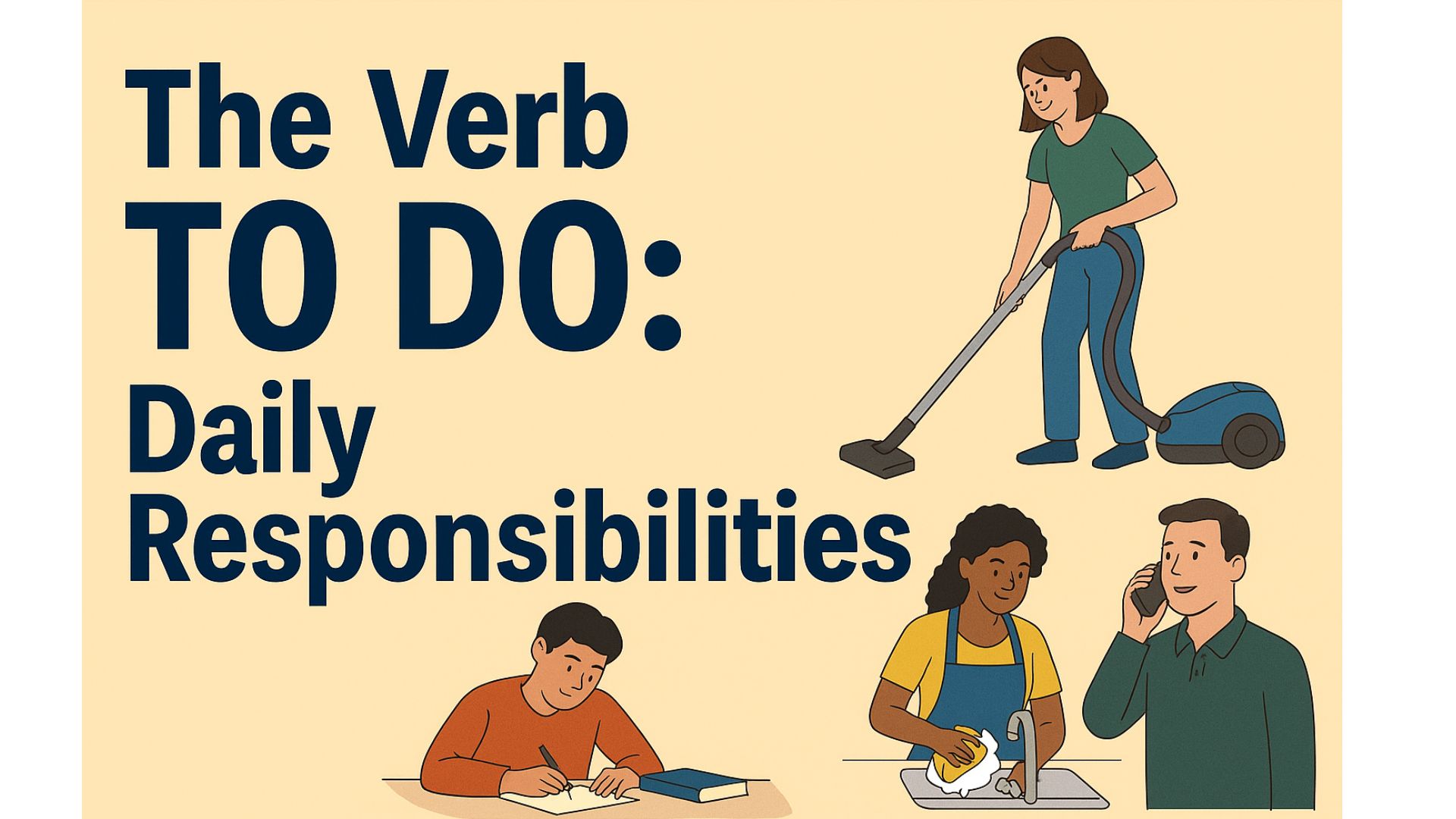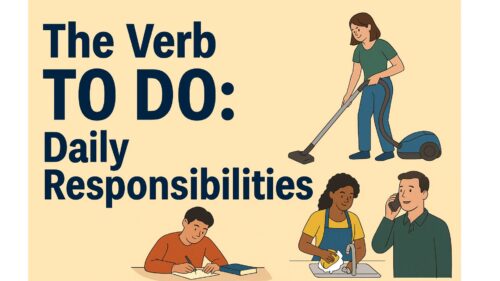Learn how to use the verb to do for daily responsibilities in past, present, and future tenses. Includes free worksheet and ESL tips.

Talking about your responsibilities is one of the most important parts of everyday English. Whether you need to describe what you do at home, what you did yesterday, or what you’ll do tomorrow, the verb to do is essential. In this beginner-friendly guide, you’ll learn how to use do, does, did, and will do naturally — with free practice materials included.
Guess what? When you click and buy through our links, you’re doing more than improving your game. You’re supporting us in a way that doesn’t cost you extra but helps us keep bringing you the best drills and tips. It’s a slam dunk for both of us!
Table of Contents
- What Are Daily Responsibilities in English?
- How Do We Use the Verb To Do in Past, Present, and Future?
- Common Phrases with To Do for Everyday Life
- Free Sample Worksheet
- Upgrade Your Learning with the Full Lesson
- Final Thoughts
What Are Daily Responsibilities in English?
Daily responsibilities are the tasks people do every day—at home, at work, or in the community. This includes chores like washing dishes, shopping for groceries, or helping kids with homework.
How Do We Use the Verb To Do in Past, Present, and Future?
We use different forms of to do depending on when something happens.
- Present: I do the dishes every day. / He does the shopping.
- Past: She did the laundry last night.
- Future: We will do the cleaning tomorrow.
We can also use do for emphasis:
✔️ I do like quiet mornings!
✔️ He did finish the assignment!
Common Phrases with To Do for Everyday Life
Here are examples your students can use immediately:
| Task Type | Example Phrase |
|---|---|
| Chores | I do the dishes every night. |
| Work Tasks | He does reports every Monday. |
| Emphasis | We do care about the results. |
| Past Reflections | I did my best yesterday. |
| Future Plans | They will do their homework. |
Free Sample Worksheet
This worksheet includes beginner-friendly examples and guided fill-in-the-blank practice for do, does, did, and will do.
Upgrade Your Learning with the Full Lesson
Want the full interactive lesson with quiz, grammar tips, and speaking practice?
👉 Get the full TPT lesson here
It’s editable, printable, and perfect for online or classroom use!
Final Thoughts
Talking about your responsibilities is a great way to practice verbs and real-life English. Use the verb to do in every tense and get confident talking about your day-to-day tasks.
💬 Have questions? Want to share how you teach this lesson? Drop a comment below or join our Study Buddy Facebook Group.
What do you think? Does this lesson help you? I’d love to hear your thoughts. Leave comments and questions in the space below. I always reply.


Mastering the verb “to do” is one of those deceptively simple steps in learning English that really lays the groundwork for fluency. I’ve noticed that learners often confuse its use in questions versus statements, especially when forming negatives. Do you find that students struggle more with auxiliary usage or with its role as a main verb? It’s such a versatile word that teaching it clearly can make a huge difference. I appreciate when lessons tie grammar to real-life daily responsibilities. It makes the structure feel more natural and practical.
Hi Slavisa, thanks for your comments. Between to do and to be, two of the most commonly used nouns in English, I spend a great deal of time drilling students on them because it is so basic. You’re right, many of them get confused when making questions from the statements. That’s why we practice it so much.
KBob